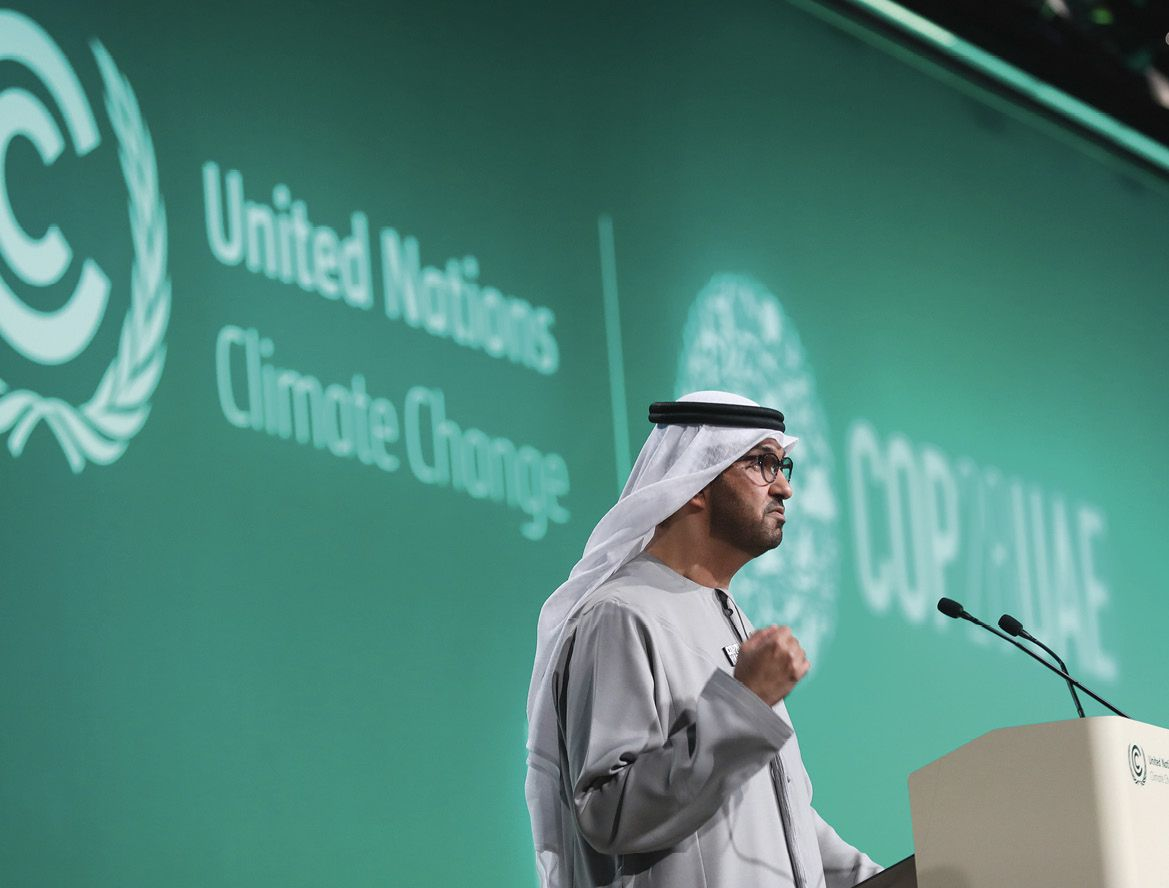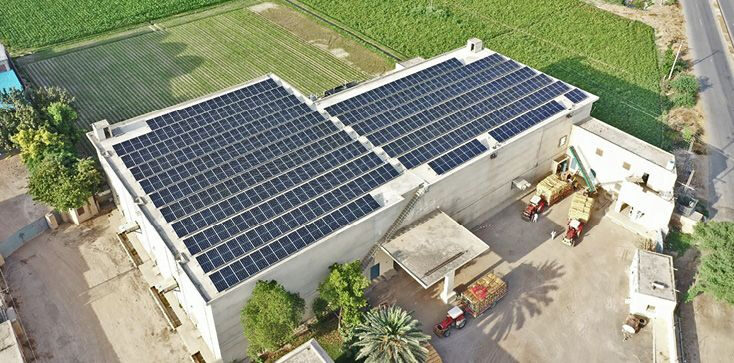Michael Taylor heads up the renewable energy costs and outlook department at the International Renewable Energy Agency (IRENA). Among other things, the Bonn-based energy analyst, who has 30 years of experience under his belt, examines the political and economic levers governments can pull to expedite renewable energy rollout.
That means Taylor is well placed to answer pv magazine’s burning question about the COP28 summit – the world’s leading climate forum, most recently hosted in the oil-rich United Arab Emirates in December 2023. Attended by delegates from roughly 200 nations, 84,000 ticketholders, and 200 exhibiting companies, a controversial edition of the gathering generated hundreds of headlines about how the global community intends to come together to limit global heating to a rise of no more than 1.5 C in average temperature this century.
Key commitments
Was the event a much-hyped win for PV, or was COP28 a flop? “Given the tripling pledge [for clean energy] and the fact that solar PV can be scaled very quickly, given the right conditions – regulatory, market-based, and, particularly, grid access – then I think it has to be seen as a win for solar,” said Taylor. The challenge, however, will be taking the shiny new clean power generation pledge from paper to “implementation and ensuring success,” Taylor added.
Another major announcement to come out of COP28 was a planned “phase down” – rather than “phase out” – of fossil fuels. UN climate chief Simon Stiell criticized the language in his final speech at the summit. He said COP28 failed to “turn the page on the fossil fuel era.” The Global Renewables and Energy Efficiency Pledge, on the other hand, is a much more optimistic commitment and has been lauded by most major energy associations. Taylor cautioned, however, that the “sparkly new initiative” comes with its own “broad” and “complex” challenges.
According to the pledge’s official documents, 123 national governments and supranational blocs, including the European Union, signed up to triple the world’s installed renewable energy generation capacity to at least 11 TW by 2030. The signatories also pledged to double the global average annual rate of energy efficiency improvements, from 2% to 4%, until the end of 2030.
The pledge includes a commitment to “significantly” increase the pace and scale of renewable energy deployment and energy efficiency improvements. This is to meet the overarching goal, enshrined in the 2015 Paris Agreement, of limiting the rise in global average temperatures this century to 2 C, with an aim of limiting it to a maximum of 1.5 C. The COP28 pledge does not include individual targets for specific renewable energy technology, such as solar, or mention energy storage facilities, such as batteries.
Qualified approval
Alyssa Pek, chief executive officer of the Global Solar Council – a PV association based in Washington, DC – said solar would need to contribute half of the 11 TW target, as it is the “fastest to deploy, fastest growing, most cost-competitive and scalable renewable energy source.” She was hesitant about the potential success of the rollout of generation capacity, saying “an ambitious pledge is even more powerful if it is backed by legally binding actions and accountability.”
Trade body SolarPower Europe’s director of global affairs, Máté Heisz, branded COP28 as momentous and a “win” for the renewable energy sector but added that both immediacy and follow-through will be required. “While a significant win for the renewable energy sector, we now need to follow this up with urgent action,” he said.
Renewable energy heavy hitters such as Germany, Australia, and the United States signed up to the pledge but China and India – two of the world’s largest and fastest-growing producers of renewable power – were notable absentees from the list. IRENA’s Taylor said the pledge’s success hinges on an equitable energy transition. “If all countries are not partaking or profiting from the energy transition, in particular the scale-up of solar and wind power, then we’re not going to be able to hit that target,” he said.
Scaling up solar is its own Herculean task. If the global community wants to continue accelerating the deployment of PV – “which is what we need, in this 1.5-degree pathway,” Taylor said – batteries need to be considered. Batteries and other energy storage technology, however, are absent from the pledge, according to Taylor. A long-term plan developed “in lockstep with our need to scale up renewable power generation” is a document that should have materialized well before the December conference, said the IRENA representative.
The energy expert also noted that the COP28 pledge does not include details of how national governments expect to deliver such massive solar deployment targets, using public policy. Nations with lower socio-economic indices, that face “higher cost of capital,” “country risk,” and other obstacles – such as a lack of “off-takers’ reliability and guarantees” – are also disadvantaged, said Taylor.
“These countries often have trouble developing a large pipeline of potentially bankable projects and what you do see is quite a narrow suite of projects that can move forward,” he said.
Money talks
Climate finance, however, was a major COP28 focus. Conference documents indicate pre-existing initiatives once again came under the spotlight, such as the Global Environment Facility and the Green Climate Fund. The Declaration on a Global Climate Finance Framework is a new plan. Supported by 13 nations, the initiative aims to mobilize $100 billion to help countries in a low socio-economic bracket in their attempts to reach climate emergency goals by 2025. The idea is underpinned by the need to develop a “diversified portfolio” of technology that can be “market-ready and available at scale” to decarbonize the energy sector, according to the COP28 website.
A lot of money has been pledged to address unequitable climate finance, Taylor said, but how much, and when the cash will be distributed is unknown.
“It’s very challenging to coordinate these multilateral financing institutions and national donors in order to get the broad products that we need,” he said. “To date, there hasn’t been a particularly good job done in achieving that.”
Verena Ross, chair of the European Securities and Markets Authority, attended COP28 and said there was an “urgent need” to support the financial sector in channeling investment toward climate change projects.
Falling short
Another PV-relevant initiative to come out of the summit was the Global Cooling Pledge for COP28. Supported by 66 national governments, the pledge aims to reduce the carbon emissions generated by cooling by at least 68%, relative to 2022 levels, by 2050. The pledge also calls for 50% more efficient air conditioning products to be available by 2030. However, Thomas Nowak, outgoing secretary-general of the Brussels-based European Heat Pump Association, said that the COP28 conclusions were “too weak” to have any meaningful effect on his industry.
“One may praise the pledge on cooling but even that falls short of recognizing the need to reuse the waste heat from cooling as a source for heat generation,” he told pv magazine.
Two months before COP28 kicked off, France-based energy research organization the International Energy Agency (IEA) released five recommendations on what should come out of the conference. Those included tripling renewable energy generation capacity, doubling the rate of energy efficiency improvement, and establishing large-scale financing mechanisms to triple energy investment. In a press release circulated after the Dubai event, the IEA confirmed COP28 had made good on only three of its policy calls. The final COP28 pledges were “not nearly enough” to shift the dial on climate change or limit warming to 1.5 degrees, the IEA said.
Taylor said ensuring COP28’s lofty ideals go from boardroom to construction is key and monitoring those who are not participating – “effectively holding a country’s feet to the fire” – is also important. “You need to ensure progress along that pathway of tripling renewable power generation capacity and the doubling of energy efficiency,” he said.
This content is protected by copyright and may not be reused. If you want to cooperate with us and would like to reuse some of our content, please contact: editors@pv-magazine.com.



2 comments
By submitting this form you agree to pv magazine using your data for the purposes of publishing your comment.
Your personal data will only be disclosed or otherwise transmitted to third parties for the purposes of spam filtering or if this is necessary for technical maintenance of the website. Any other transfer to third parties will not take place unless this is justified on the basis of applicable data protection regulations or if pv magazine is legally obliged to do so.
You may revoke this consent at any time with effect for the future, in which case your personal data will be deleted immediately. Otherwise, your data will be deleted if pv magazine has processed your request or the purpose of data storage is fulfilled.
Further information on data privacy can be found in our Data Protection Policy.